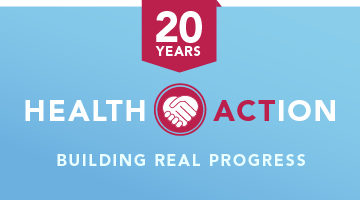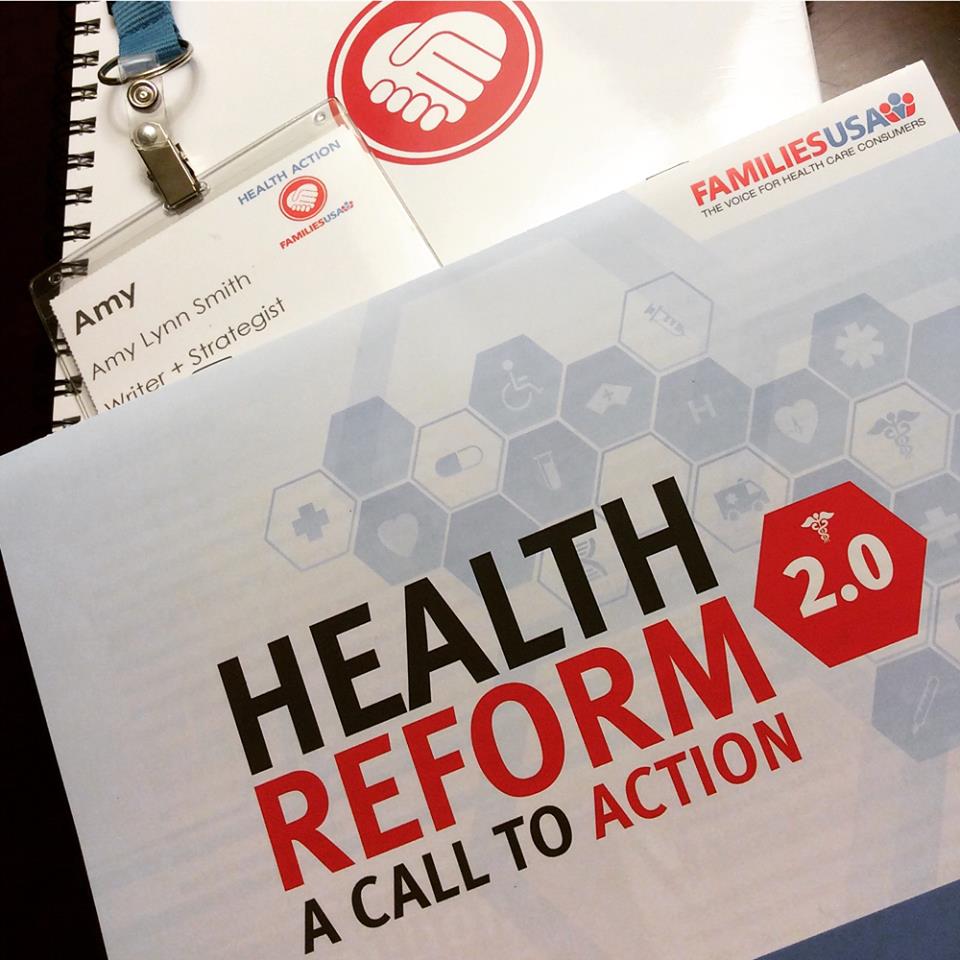There’s nothing like a conference full of health advocates to remind you how far we’ve come — and how far we have to go.
If you think the Affordable Care Act (ACA) is all there is to health reform, you could not be more wrong. It’s understandable, I suppose, that folks who don’t work in health advocacy might not be aware of the decades of work that went into an accomplishment like the ACA, and so many other important achievements.
What’s more, you ain’t seen nothing yet.
 I say this with confidence, as someone who proudly stands alongside health reform advocates across the country. And I’m especially confident after being among those gathered for the 20th annual Families USA Health Action conference in Washington, D.C.
I say this with confidence, as someone who proudly stands alongside health reform advocates across the country. And I’m especially confident after being among those gathered for the 20th annual Families USA Health Action conference in Washington, D.C.
Families USA is a national nonprofit, nonpartisan organization dedicated to making high-quality, affordable healthcare available to all Americans. The organization’s annual conference is an opportunity for advocates to come together to hear from leaders in the field, learn from each other and share ideas. You can read a quick overview of this year’s gathering in a Storify I created of social media posts from the conference.
Health Action is also a chance to celebrate everything we’ve achieved as a community and get ready for what’s next in an area of advocacy that’s always moving forward.
As my friend Ryan Sullivan, policy director at Michigan Consumers for Healthcare once said to me, “Health reform is like a patchwork quilt that will never be finished.” He’s right.
This idea was echoed by Families USA Executive Director Ron Pollack, who I had an opportunity to interview during the Health Action conference.
At Families USA, our view is that the quest for high-quality, affordable health coverage and care for everybody didn’t start with the Affordable Care Act and it doesn’t end with the Affordable Care Act. It created an important foundation — it’s a marvelous achievement — but we’ve got a long way to go.
To that end, Families USA has created a roadmap for the next frontier in health reform — a detailed report called “Health Reform 2.0: A Call To Action.”
 The report provides a path for securing health coverage for every American and creating true health equity, and for achieving three critical objectives: improving health, enhancing quality of care and reducing healthcare costs.
The report provides a path for securing health coverage for every American and creating true health equity, and for achieving three critical objectives: improving health, enhancing quality of care and reducing healthcare costs.
You can download and read the full report HERE, but Health Reform 2.0 focuses on four key goals for reforming the healthcare system, as described in the Executive Summary:
1. Securing health coverage for all: expanding Medicaid in all states, strengthening children’s coverage by extending CHIP funding and improving private insurance, and making it easier for people to enroll in and renew coverage
2. Ensuring that health coverage means access to needed care: creating a more equitable distribution of providers, ensuring that provider networks deliver meaningful access to care, and making dental coverage universally available
3. Transforming our health care system to provide care that is appropriate, high-quality, equitable and patient-centered: paying for quality — not quantity — of care, ensuring coordination of care, and fostering evidence-based care
4. Reducing health care costs and making care more affordable: stopping uncompetitive provide consolidations, reducing high prescription drug costs, and making information on health care cost and quality transparent
These are all ambitious goals that will take time and effort to achieve, but the work is already underway. For example, the White House took a major step the week after Health Action, announcing its plan to pay Medicare doctors based on the outcome of treatment. Doctors who treat Medicare recipients will be rewarded for making patients healthier instead of on the basis of how many tests and treatments they order — tests and treatments that may or may not be beneficial to the patient.
This focus on evidence-based care — using treatments that are proven effective through research — has the potential to both reduce costs and improve care, says Pollack.
We’ve got to invest more heavily in evidence-based medicine, so the various groups that work on the science have the resources to develop more guidelines and look at all alternative therapies to see which ones really work. It’s not just those that are most effective but also those that are most cost-effective.If they’re effective and cost-effective, I think insurers will be inclined to include them as part of plans. It’s in their interest to keep premiums down and keep customers healthy.
Efforts to fund more research were given a boost during Health Action, where Senator Elizabeth Warren announced new legislation she introduced the following week: The Medical Innovation Act.
 The bill creates a “swear jar” for pharmaceutical companies, requiring those who break the law to contribute to funding for the National Institutes of Health (NIH). It’s a way to make pharmaceutical companies more accountable and to make sure they contribute to NIH research they often benefit from — research that’s funded by taxpayers.
The bill creates a “swear jar” for pharmaceutical companies, requiring those who break the law to contribute to funding for the National Institutes of Health (NIH). It’s a way to make pharmaceutical companies more accountable and to make sure they contribute to NIH research they often benefit from — research that’s funded by taxpayers.
This is just one of the many bright ideas brought forth at Health Action, from the main stage and in breakout sessions, from both advocates who have been in the field for decades and emerging professionals just starting their careers.
There’s no shortage of enthusiasm and determination among health advocates. We still have our work cut out for us, but people like Pollack have a steadfast vision for the future.
The reason we issued Health Reform 2.0 is that things don’t happen overnight. You have to plant the seeds for the next period of change. We don’t see this as an overnight effort. There will need to be ongoing education and ongoing advocacy. We think the time is always right to think in a forward way.
Read more about what was discussed at Health Action — and why we all feel so optimistic — in the daily summaries created by Families USA.
[Image credits: Top and bottom courtesy of Families USA; center photo by Amy Lynn Smith]



